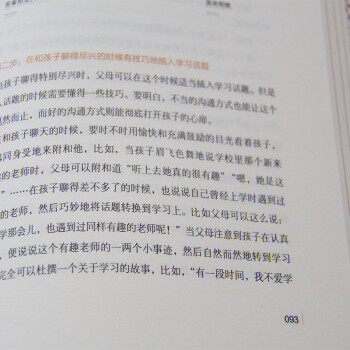热门推荐商品
-
神奇的逻辑思维游戏书 5-13岁提升孩子逻辑思维训练
¥22.50
-
正面管教 修订版 如何不惩罚不娇纵有效管教孩子 育儿百科 最温柔的教养 樊登 早教书
¥19.00
-
一本书读懂中国茶
¥24.90
-
中国国家地理:最好的时光在路上
¥24.90
-
正面管教儿童行为心理学
¥19.00
-
正面管教男孩100招(养育男孩全书)父母的语言话术
¥18.00
-
陪孩子度过7~9岁叛逆期(7-9岁关键养育 叛逆不是孩子的错 男孩女孩自驱型成长)
¥16.30
-
女生呵护指南
¥39.00
-
西尔斯怀孕百科
¥41.50
-
协和医院专家教你吃对不生病:糖尿病吃什么宜忌速查
¥14.90
- 商品名称:国外数学名著系列(续一 影印版)63:李群与李代数III 李群和李代数的结构
- 商品编号:11925929
产品特色
要使我国的数学事业更好地发展起来,需要数学家淡泊名利并付出更艰苦地努力。另一方面,我们也要从客观上为数学家创造更有利的发展数学事业的外部环境,这主要是加强对数学事业的支持与投资力度,使数学家有较好的工作与生活条件,其中也包括改善与加强数学的出版工作。科学出版社影印一批他们出版的好的新书,使我国广大数学家能以较低的价格购买,特别是在边远地区工作的数学家能普遍见到这些书,无疑是对推动我国数学的科研与教学十分有益的事。
这次科学出版社购买了版权,一次影印了23本施普林格出版社出版的数学书,就是一件好事,也是值得继续做下去的事情。大体上分一下,这23本书中,包括基础数学书5本,应用数学书6本与计算数学书12本,其中有些书也具有交叉性质。这些书都是很新的,2000年以后出版的占绝大部分,共计16本,其余的也是1990年以后出版的。这些书可以使读者较快地了解数学某方面的前沿,例如基础数学中的数论、代数与拓扑三本,都是由该领域大数学家编著的“数学百科全书”的分册。对从事这方面研究的数学家了解该领域的前沿与全貌很有帮助。按照学科的特点,基础数学类的书以“经典”为主,应用和计算数学类的书以“前沿”为主。这些书的作者多数是国际知名的大数学家,例如《拓扑学》一书的作者诺维科夫是俄罗斯科学院的院士,曾获“菲尔兹奖”和“沃尔夫数学奖”。这些大数学家的著作无疑将会对我国的科研人员起到非常好的指导作用。
当然,23本书只能涵盖数学的一部分,所以,这项工作还应该继续做下去。更进一步,有些读者面较广的好书还应该翻译成中文出版,使之有更大的读者群。
总之,我对科学出版社影印施普林格出版社的部分数学著作这一举措表示热烈的支持,并盼望这一工作取得更大的成绩。
内容简介
The book contains a comprehensive account of the structure and classification of Lie groups and finite-dimensional Lie algebras(including semisimple, solvable, and of general type). In particular,a modem approach to the description of automorphisms and gradings of semisimple Lie algebras is given. A special chapter is devoted to models ofthe exceptional Lie algebras. The book contains many tables and will serve as a reference. At the same time many results are accompanied by short proofs.Onishchik and Vinberg are internationally known specialists in their field; they are also well known for their monograph "Lie Groups and Algebraic Groups (Springer-Verlag 1990).The book will be immensely useful to graduate students in differential geometry, algebra and theoretical physics.目录
IntroductionChapter 1.General Theorems
1.Lie's and Engel's Theorems
1.1.Lie's Theorem
1.2.Generalizations of Lie's Theorem
1.3.Engel's Theorem and Corollaries to It
1.4.An Analogue of Engel's Theorem in Group Theory
2.The Caftan Criterion
2.1.Invariant Bilinear Forms
2.2.Criteria of Solvability and Semisimplicity
2.3.Factorization into Simple Factors
3.Complete Reducibility of Representations and Triviality of the Cohomology of Semisimple Lie Algebras
3.1.Cohomological Criterion of Complete Reducibility
3.2.The Casimir Operator
3.3.Theorems on the Triviality of Cohomology
3.4.Complete Reducibility of Representations
3.5.Reductive Lie Algebras
4.Levi Decomposition
4.1.Levi's Theorem
4.2.Existence of a Lie Group with a Given Tangent Algebra
4.3.Malcev's Theorem
4.4.Classification of Lie Algebras with a Given Radical
5.Linear Lie Groups
5.1.Basic Notions
5.2.Some Examples
5.3.Ado's Theorem
5.4.Criteria of Linearizability for Lie Groups.Linearizer
5.5.Sufficient Linearizability Conditions
5.6.Structure of Linear Lie Groups
6.Lie Groups and Algebraic Groups
6.1.Complex and Real Algebraic Groups
6.2.Algebraic Subgroups and Subalgebras
6.3.Semisimple and Reductive Algebraic Groups
6.4.Polar Decomposition
6.5.Chevalley Decomposition
7.Complexification and Real Forms
7.1.Complexification and Real Forms of Lie Algebras
7.2.Complexification and Real Forms of Lie Groups
7.3.Universal Complexification of a Lie Group
8.Splittings of Lie Groups and Lie Algebras
8.1.Malcev Splittable Lie Groups and Lie Algebras
8.2.Definition of Splittings of Lie Groups and Lie Algebras
8.3.Theorem on the Existence and Uniqueness of Splittings
9.Caftan Subalgebras and Subgroups.Weights and Roots
9.1.Representations of Nilpotent Lie Algebras
9.2.Weights and Roots with Respect to a Nilpotent Subalgebra
9.3.Caftan Subalgebras
9.4.Caftan Subalgebras and Root Decompositions of Semisimple Lie Algebras
9.5.Caftan Subgroups
Chapter 2.Solvable Lie Groups and Lie Algebras
1.Examples
2.Triangular Lie Groups and Lie Algebras
3.Topology of Solvable Lie Groups and Their Subgroups
3.1.Canonical Coordinates
3.2.Topology of Solvable Lie Groups
3.3.Aspherical Lie Groups
3.4.Topology of Subgroups of Solvable Lie Groups
4.Nilpotent Lie Groups and Lie Algebras
4.1.Definitions and Examples
4.2.Malcev Coordinates
4.3.Cohomology and Outer Automorphisms
5.Nilpotent Radicals in Lie Algebras and Lie Groups
5.1.Nilradical
5.2.Nilpotent Radical
5.3.Unipotent Radical
6.Some Classes of Solvable Lie Groups and Lie Algebras
6.1.Characteristically Nilpotent Lie Algebras
6.2.Filiform Lie Algebras
6.3.Nilpotent Lie Algebras of Class 2
6.4.Exponential Lie Groups and Lie Algebras
6.5.Lie Algebras and Lie Groups of Type (I)
7.Linearizability Criterion for Solvable Lie Groups
Chapter 3.Complex Semisimple Lie Groups and Lie Algebras
1.Root Systems
1.1.Abstract Root Systems
1.2.Root Systems of Reductive Groups
1.3.Root Decompositions and Root Systems for Classical Complex Lie Algebras
1.4.Weyl Chambers and Simple Roots
1.5.Borel Subgroups and Subalgebras
1.6.The Weyl Group
1.7.The Dynkin Diagram and the Cartan Matrix
1.8.Classification of Admissible Systems of Vectors and Root Systems
1.9.Root and Weight Lattices
1.10.Chevalley Basis
2.Classification of Complex Semisimple Lie Groups and Their Linear Representations
2.1.Uniqueness Theorems for Lie Algebras
2.2.Uniqueness Theorem for Linear Representations
2.3.Existence Theorems
2.4.Global Structure of Connected Semisimple Lie Groups
2.5.Classification of Connected Semisimple Lie Groups
2.6.Linear Representations of Connected Reductive Algebraic Groups
2.7.Dual Representations and Bilinear Invariants
2.8.The Kernel and the Image of a Locally Faithful Linear Representation
2.9.The Casimir Operator and Dynkin Index
2.10.Spinor Group and Spinor Representation
3.Automorphisms and Gradings
3.1.Description of the Group of Automorphisms
3.2.Quasitori of Automorphisms and Gradings
3.3.Homogeneous Semisimple and Nilpotent Elements
3.4.Fixed Points of Automorphisms
3.5.One—dimensional Tori of Automorphisms and Z—gradings
3.6.Canonical Form of an Inner Semisimple Automorphism
3.7.Inner Automorphisms of Finite Order and Zm—gradings of Inner Type
3.8.Quasitorus Associated with a Component of the Group of Automorphisms
3.9.Generalized Root Decomposition
3.10.Canonical Form of an Outer Semisimple Automorphism
3.11.Outer Automorphisms of Finite Order and Zm—gradings of Outer Type
3.12.Jordan Gradings of Classical Lie Algebras
3.13.Jordan Gradings of Exceptional Lie Algebras
Chapter 4.Real Semisimple Lie Groups and Lie Algebras
1.Classification of Real Semisimple Lie Algebras
1.1.Real Forms of Classical Lie Groups and Lie Algebras
1.2.Compact Real Form
1.3.Real Forms and Involutory Automorphisms
1.4.Involutory Automorphisms of Complex Simple Algebras
1.5.Classification of Real Simple Lie Algebras
2.Compact Lie Groups and Complex Reductive Groups
2.1.Some Properties of Linear Representations of Compact Lie Groups
2.2.Selfoadjointness of Reductive Algebraic Groups
2.3.Algebralcity of a Compact Lie Group
2.4.Some Properties of Extensions of Compact Lie Groups
2.5.Correspondence Between Real Compact and Complex Reductive Lie Groups
2.6.Maximal Tori in Compact Lie Groups
3.Cartan Decomposition
3.1.Cartan Decomposition of a Semisimple Lie Algebra
3.2.Caftan Decomposition of a Semisimple Lie Group
3.3.Conjugacy of Maximal Compact Subgroups of Semisimple Lie Groups
3.4.Topological Structure of Lie Groups
3.5.Classification of Connected Semisimple Lie Groups
3.6.Linearizer of a Semisimple Lie Group
4.Real Root Decomposition
4.1.Maximal R—Diagonalizable Subalgebras
4.2.Real Root Systems
4.3.Satake Diagrams
4.4.Split Real Semisimple Lie Algebras
4.5.Iwasawa Decomposition
4.6.Maximal Connected Triangular Subgroups
4.7.Cartan Subalgebras of a Real Semisimple Lie Algebra
5.Exponential Mapping for Semisimple Lie Groups
5.1.Image of the Exponential Mapping
5.2.Index of an Element of a Lie Group
5.3.Indices of Simple Lie Groups
Chapter 5.Models of Exceptional Lie Algebras
1.Models Associated with the Cayley Algebra
1.1, Cayley Algebra
1.2.The Algebra G2
1.3.Exceptional Jordan Algebra
1.4.The Algebra F4
1.5.The Algebra E6
1.6.The Algebra E7
1.7.Unified Construction of Exceptional Lie Algebras
2.Models Associated with Gradings
Chapter 6.Subgroups and Subalgebras of Semisimple Lie Groups and Lie Algebras
1.Regular Subalgebras and Subgroups
1.1.Regular Subalgebras of Complex Semisimple Lie Algebras
1.2.Description of Semisimple and Reductive Regular Subalgebras
1.3.Parabolic Subalgebras and Subgroups
1.4.Examples of Parabolic Subgroups and Flag Manifolds
1.5.Parabolic Subalgebras of Real Semisimple Lie Algebras
1.6.Nonsemisimple Maximal Subalgebras
2.Three—dimensional Simple Subalgebras and Nilpotent Elements
2.1.sι2—triples
2.2.Three—dimensional Simple Subalgebras of Classical Simple Lie Algebras
2.3.Principal and Semiprincipal Three—dimensional Simple Subalgebras
2.4.Minimal Ambient Regular Subalgebras
2.5.Minimal Ambient Complete Regular Subalgebras
3.Semisimple Subalgebras and Subgroups
3.1.Semisimple Subgroups of Complex Classical Groups
3.2.Maximal Connected Subgroups of Complex Classical Groups
3.3.Semisimple Subalgebras of Exceptional Complex Lie Algebras
3.4.Semisimple Subalgebras of Real Semisimple Lie Algebras
Chapter 7.On the Classification of Arbitrary Lie Groups and Lie Algebras of a Given Dimension
1.Classification of Lie Groups and Lie Algebras of Small Dimension
1.1.Lie Algebras of Small1 Dimension
1.2.Connected Lie Groups of Dimension < 3
2.The Space of Lie Algebras.Deformations and Contractions
2.1.The Space of Lie Algebras
2.2.Orbits of the Action of the Group Gιn(k) on ι(k)
2.3.Deformations of Lie Algebras
2.4.Rigid Lie Algebras
2.5.Contractions of Lie Algebras
2.6.Spaces ιn(k) for Small n
Tables
References
Author Index
Subject Index


















 沪公网安备 31010402003631号
沪公网安备 31010402003631号